BuySellBA
Administrator
Next to Belgrano R: property prices in the Buenos Aires neighborhood where “everything” is 5 minutes away - La Nación Propiedades

Source:

 www.lanacion.com.ar
www.lanacion.com.ar
September 30, 2023
The values of the properties in a green area and where the new projects are.
By Victoria Aranda

The Donado Holmberg commercial hub stands out for its offer and green spaces
“When we started it was basically selling a dream.” This is how Diego Rybka, owner of the Uno en Uno developer, describes his first experience in the Donado Holmberg (DoHo) corridor. And, by the way, he did not appeal to a metaphor: definitely, the area located between Villa Urquiza and Belgrano R did not look like it does today and when investing it was necessary to trust in the evolution of a degraded space in the city.
The current DoHo is a residential area full of green with its modern gastronomic center, which emerged as a result of recovering 14 blocks in which several properties were expropriated in 1977 for the construction of the Central Highway 3, designed by the last de facto government. During the 80s, the project was left unfinished and the layout began to be occupied.
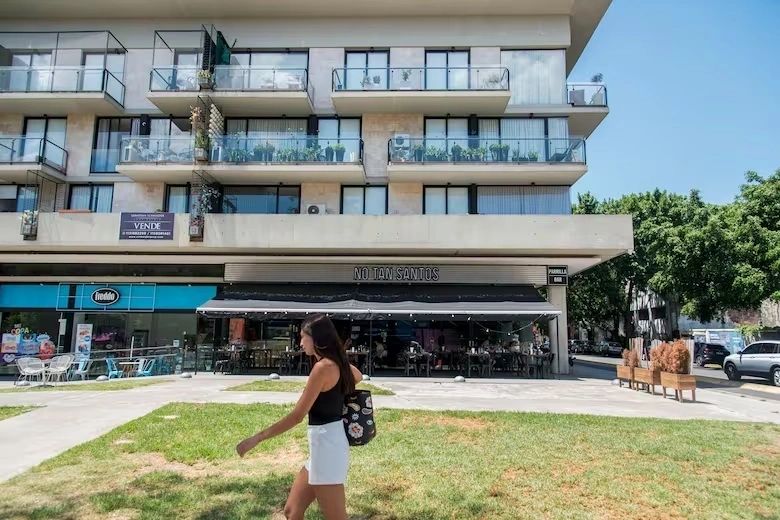
Located between Villa Urquiza and Belgrano R, the area evolved from a degraded space in the city to the neighborhood you see today.
In 2009, following Law 3395 for the creation of the new park neighborhood, the construction of the underpasses on Donado and Holmberg streets began, the creation of a model school; the new building and move of the Community Headquarters 12, in addition to the first homes for the inhabitants of sector 5 of the layout - the other sector is 4 -, between Congreso and Avenida de Los Incas.
What followed, already at the beginning of the second decade of this century, was the construction of new developments. “Today, this corridor, already redefined with modern architecture, has been transformed into a very attractive area, full of modern apartment buildings, green spaces and a vibrant energy comparable to the most modern neighborhoods of the most important cities in the world,” he details. Mariano Bellagamba, owner of the homonymous real estate company with activity in the area.
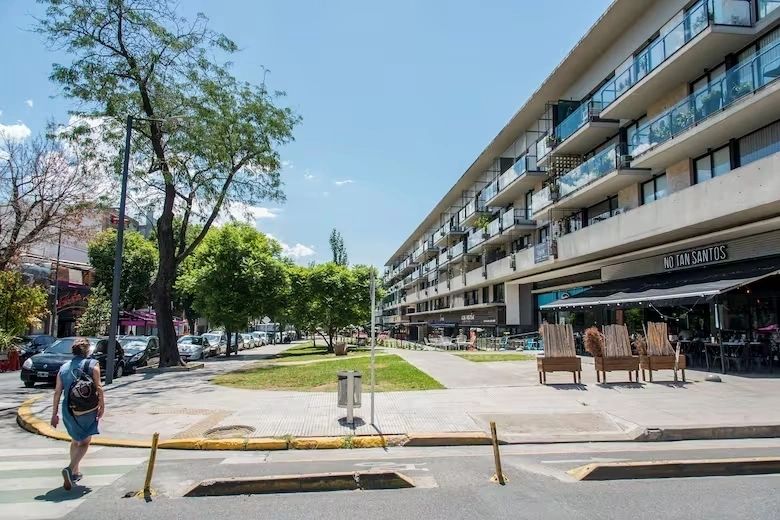
The gastronomic proposal contributed to the concept of having everything close to home.
“The corridor represents a true urban transformation, perhaps the last one that occurred in the city,” Rybka resumes, consulted about the passage of time and explaining that the DoHo was an initiative that involved the creation of social housing, in addition to compromising the developer to limit himself to six-level projects, plus a design of double lanes, bike paths and lots of green.
Specifically, the layout generated a linear park that provides 18,200 m². According to Rybka, responsible for Mo Ho, Casa Ho and Mendoza Ho, the developer's three initiatives in the corridor have already been completed, and a harmony was achieved between social housing and new developments. “And in relation to the commercial, the gastronomic proposal provided a certain nocturnality, and also aligns with the concept of having everything close to home.” Perhaps the neighborhood's best secret: becoming a “five-minute city” before the pandemic.
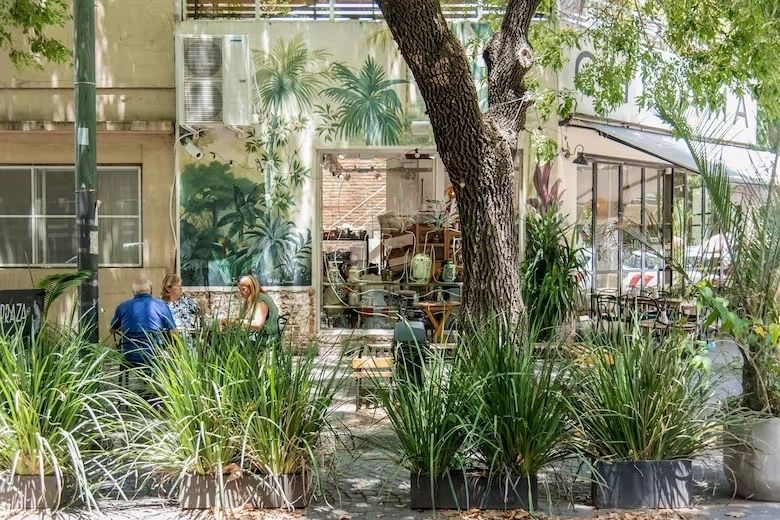
The current DoHo is a residential area full of green with its chic gastronomic hub.
In addition to a change in the landscape, the passing of the years, Rybca indicates, represented a revaluation. “The broker has defended the values,” she emphasizes, sharing that those who bought in-hand when the projects began paid US$1,600/m²; ventures that later ended up selling for US$3000/m². “I remember that back in 2011 or 2012, a fee of $6,000 per month was paid,” he recalls, in relation to the first buyers, whom he describes – no doubt looking at the numbers – as “visionaries.”
When it comes to prices, Bellagamba says apartments are currently selling, on average, between US$2,600 and US$3,100/m², depending on the type of unit and building. “Availability is low simply because demand is high, which speaks of the popularity of the place,” he emphasizes when analyzing the market. “The demand is so strong that it is difficult to compare it with any other neighborhood in the city,” she emphasizes.
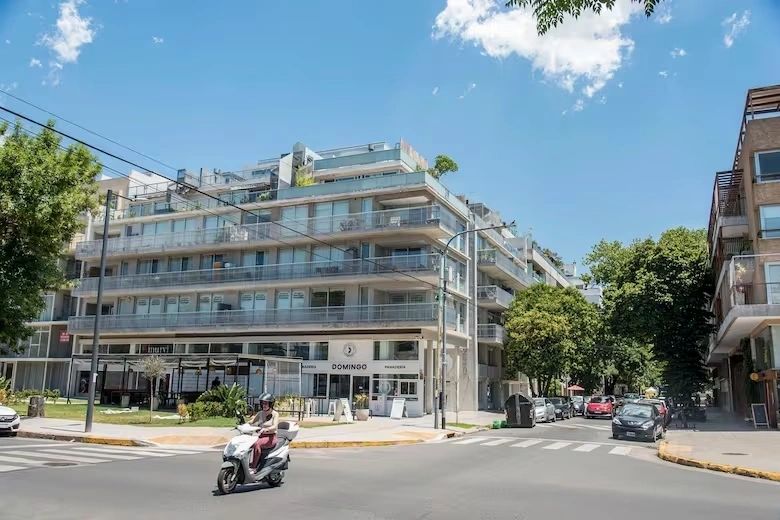
Even though there are very consolidated blocks, there is also new offer, the majority is found surrounding Plaza Zapiola, at 2000 Mariano Acha.
For Gustavo De Simone, CEO of Gustavo De Simone Soluciones Inmobiliarias, requests for housing in the area have increased due to the neighborhood's strategic location, its connectivity with public transportation and its proximity to services, such as schools and health centers. The GPS consultation supports the information, and reveals the proximity of the corridor to Triunvirato Avenue and subway B.
“In this context, there was an increase in property prices, both for sale and rent,” continues De Simone. “In fact, there is almost no rental offer on Holmberg, although there is in surrounding areas. For example, a studio apartment in the surrounding area is offered at $200,000 per month, and a one-bedroom apartment at $250,000, she points out.
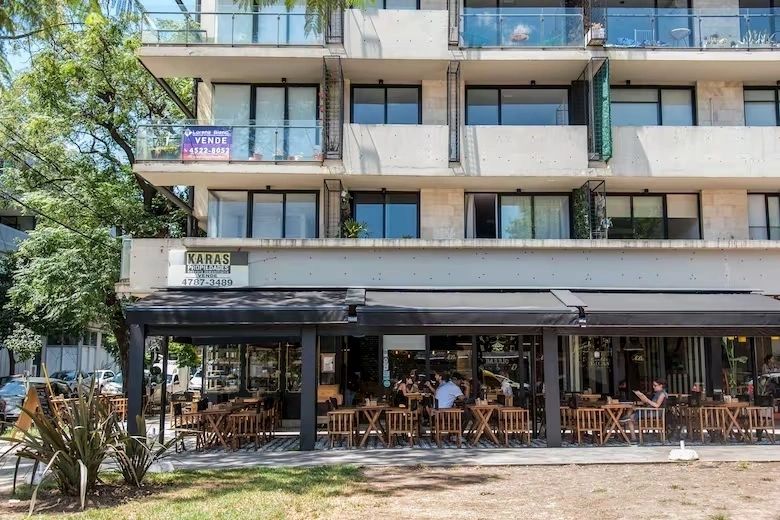
All apartments, even the studio apartments, have terraced balconies with grills.
Even though there are very consolidated blocks, there is also new offer, the majority is found surrounding Plaza Zapiola , at 2000 Mariano Acha. There, explains Osvaldo Mertnoff, owner along with Matías Benenzon of the developer Beme, there are at least six works in progress, plus another two that are coming up on land that was recently sold. “Indeed, it is where the corridor grows, around the plaza, which is where a kind of microsite has been generated,” he defines.
Right there, Beme has two projects: DoHo Plaza I and II, with delivery dates in October of this year and in February 2025. As architect Mertnoff explains, the view of the plaza is definitely a plus. “All the apartments, even the studio apartments, have terraced balconies, with grills, that seek to integrate with the greenery that surrounds them,” he adds, combining location and design.
The offer starts at US$2,100/m², “and it is selling very well,” the developer says, where they emphasize that there is a lot of interest in the neighborhood, especially from end consumers. “And returning to the values, it is a price that, in the future, may be around US$2,800/m² or US$3,000/m².”
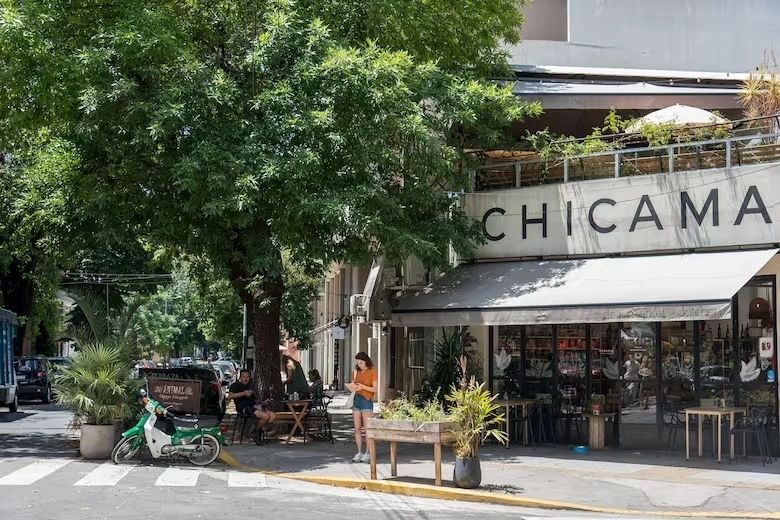
Do-Ho is an urban jewel and the green lung that everyone would like to have within walking distance of their home.
From Baigún Real Estate Operations they share that they also have two initiatives under construction in the Plaza Zapiola area. “The DoHo area is surrounded by beautiful trees and great vegetation, it is an urban jewel, it is the green lung that everyone would like to have within walking distance of their home,” says the commercial director of the firm, Matías Chirom, analyzing the reasons why preferences fall to the runner.
What does this offer consist of, specifically? According to Chirom, Acros Donado, in Donado al 2000, is an eight-story project located on a 28-meter front lot, with one-bedroom apartments that start at US$133,000, while Acros Juramento, in Juramento al 2000, It is a development with studio, one and two-bedroom units, all in front with views of the plaza, plus a large premises on the ground floor.
Those who buy and those who visit
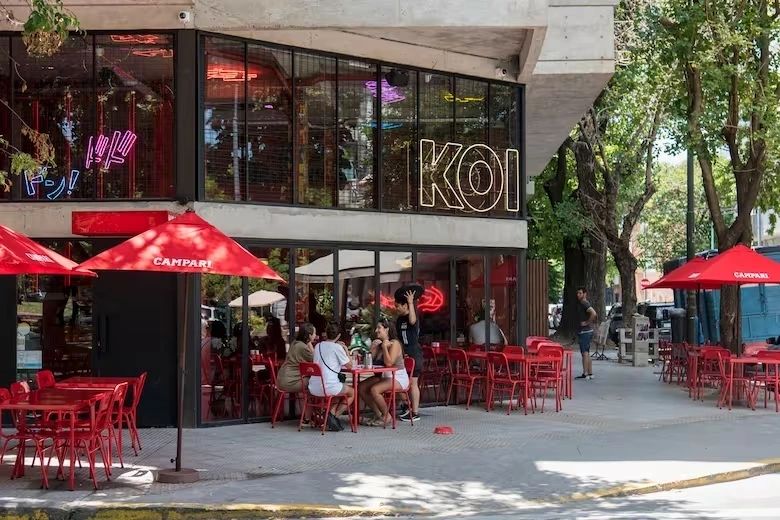
Restaurants operate day and night.
“The corridor is chosen mainly by young people who have always lived in the area and families who choose to live in a peaceful place, but that at the same time has gastronomic options and shops; and in a neighborhood that does not stop growing but at the same time maintains its calm spirit and on foot,” adds Chirom.
According to all the sources consulted, those interested in the corridor are mainly residents of the neighborhoods of Coghlan, Villa Urquiza, Villa Pueyrredón and Saavedra. “Young professionals looking for urban life but with a little peace of mind.” The same neighborhoods are mentioned when consulted by regulars at the restaurants in the corridor.
The gastronomic offer, as said, works day and night, although, under the sun, the truth is that in the corridor - be it because of its width, or because of its landscape, or because of its slow transit - you can breathe a certain holiday air. For those who go for a walk, you can go to Monroe Square, on this avenue at the intersection with Holmberg, which is also part of the recovery of the area of the former highway 3 and which has sculptures by architect Clorindo Testa.
Victoria Aranda
www.buysellba.com

Source:
Al lado de Belgrano R: el barrio porteño en el que todo está a 5 minutos
El nuevo barrio DoHo hace culto al verde y se multiplican los nuevos proyectos; cuánto cuesta un departamento
September 30, 2023
The values of the properties in a green area and where the new projects are.
By Victoria Aranda

The Donado Holmberg commercial hub stands out for its offer and green spaces
What you have to know
- The DoHo corridor, located in the area between Villa Urquiza and Belgrano R, was redesigned with modern architecture, transforming into a very attractive area full of apartment buildings, green spaces and vibrant energy.
- Its strategic location near Triunvirato Avenue and subway B, together with its large linear park of 18,200 m², have made it a very popular neighborhood with a high demand for housing.
- Income from apartment sales is between US$2,600 and US$3,100/m², and rents near Plaza Zapiola are around $200,000 and $250,000 per month depending on the environment.
“When we started it was basically selling a dream.” This is how Diego Rybka, owner of the Uno en Uno developer, describes his first experience in the Donado Holmberg (DoHo) corridor. And, by the way, he did not appeal to a metaphor: definitely, the area located between Villa Urquiza and Belgrano R did not look like it does today and when investing it was necessary to trust in the evolution of a degraded space in the city.
The current DoHo is a residential area full of green with its modern gastronomic center, which emerged as a result of recovering 14 blocks in which several properties were expropriated in 1977 for the construction of the Central Highway 3, designed by the last de facto government. During the 80s, the project was left unfinished and the layout began to be occupied.

Located between Villa Urquiza and Belgrano R, the area evolved from a degraded space in the city to the neighborhood you see today.
In 2009, following Law 3395 for the creation of the new park neighborhood, the construction of the underpasses on Donado and Holmberg streets began, the creation of a model school; the new building and move of the Community Headquarters 12, in addition to the first homes for the inhabitants of sector 5 of the layout - the other sector is 4 -, between Congreso and Avenida de Los Incas.
What followed, already at the beginning of the second decade of this century, was the construction of new developments. “Today, this corridor, already redefined with modern architecture, has been transformed into a very attractive area, full of modern apartment buildings, green spaces and a vibrant energy comparable to the most modern neighborhoods of the most important cities in the world,” he details. Mariano Bellagamba, owner of the homonymous real estate company with activity in the area.
From yesterday to today

The gastronomic proposal contributed to the concept of having everything close to home.
“The corridor represents a true urban transformation, perhaps the last one that occurred in the city,” Rybka resumes, consulted about the passage of time and explaining that the DoHo was an initiative that involved the creation of social housing, in addition to compromising the developer to limit himself to six-level projects, plus a design of double lanes, bike paths and lots of green.
Specifically, the layout generated a linear park that provides 18,200 m². According to Rybka, responsible for Mo Ho, Casa Ho and Mendoza Ho, the developer's three initiatives in the corridor have already been completed, and a harmony was achieved between social housing and new developments. “And in relation to the commercial, the gastronomic proposal provided a certain nocturnality, and also aligns with the concept of having everything close to home.” Perhaps the neighborhood's best secret: becoming a “five-minute city” before the pandemic.

The current DoHo is a residential area full of green with its chic gastronomic hub.
In addition to a change in the landscape, the passing of the years, Rybca indicates, represented a revaluation. “The broker has defended the values,” she emphasizes, sharing that those who bought in-hand when the projects began paid US$1,600/m²; ventures that later ended up selling for US$3000/m². “I remember that back in 2011 or 2012, a fee of $6,000 per month was paid,” he recalls, in relation to the first buyers, whom he describes – no doubt looking at the numbers – as “visionaries.”
When it comes to prices, Bellagamba says apartments are currently selling, on average, between US$2,600 and US$3,100/m², depending on the type of unit and building. “Availability is low simply because demand is high, which speaks of the popularity of the place,” he emphasizes when analyzing the market. “The demand is so strong that it is difficult to compare it with any other neighborhood in the city,” she emphasizes.

Even though there are very consolidated blocks, there is also new offer, the majority is found surrounding Plaza Zapiola, at 2000 Mariano Acha.
For Gustavo De Simone, CEO of Gustavo De Simone Soluciones Inmobiliarias, requests for housing in the area have increased due to the neighborhood's strategic location, its connectivity with public transportation and its proximity to services, such as schools and health centers. The GPS consultation supports the information, and reveals the proximity of the corridor to Triunvirato Avenue and subway B.
“In this context, there was an increase in property prices, both for sale and rent,” continues De Simone. “In fact, there is almost no rental offer on Holmberg, although there is in surrounding areas. For example, a studio apartment in the surrounding area is offered at $200,000 per month, and a one-bedroom apartment at $250,000, she points out.
What's new

All apartments, even the studio apartments, have terraced balconies with grills.
Even though there are very consolidated blocks, there is also new offer, the majority is found surrounding Plaza Zapiola , at 2000 Mariano Acha. There, explains Osvaldo Mertnoff, owner along with Matías Benenzon of the developer Beme, there are at least six works in progress, plus another two that are coming up on land that was recently sold. “Indeed, it is where the corridor grows, around the plaza, which is where a kind of microsite has been generated,” he defines.
Right there, Beme has two projects: DoHo Plaza I and II, with delivery dates in October of this year and in February 2025. As architect Mertnoff explains, the view of the plaza is definitely a plus. “All the apartments, even the studio apartments, have terraced balconies, with grills, that seek to integrate with the greenery that surrounds them,” he adds, combining location and design.
The offer starts at US$2,100/m², “and it is selling very well,” the developer says, where they emphasize that there is a lot of interest in the neighborhood, especially from end consumers. “And returning to the values, it is a price that, in the future, may be around US$2,800/m² or US$3,000/m².”

Do-Ho is an urban jewel and the green lung that everyone would like to have within walking distance of their home.
From Baigún Real Estate Operations they share that they also have two initiatives under construction in the Plaza Zapiola area. “The DoHo area is surrounded by beautiful trees and great vegetation, it is an urban jewel, it is the green lung that everyone would like to have within walking distance of their home,” says the commercial director of the firm, Matías Chirom, analyzing the reasons why preferences fall to the runner.
What does this offer consist of, specifically? According to Chirom, Acros Donado, in Donado al 2000, is an eight-story project located on a 28-meter front lot, with one-bedroom apartments that start at US$133,000, while Acros Juramento, in Juramento al 2000, It is a development with studio, one and two-bedroom units, all in front with views of the plaza, plus a large premises on the ground floor.
Those who buy and those who visit

Restaurants operate day and night.
“The corridor is chosen mainly by young people who have always lived in the area and families who choose to live in a peaceful place, but that at the same time has gastronomic options and shops; and in a neighborhood that does not stop growing but at the same time maintains its calm spirit and on foot,” adds Chirom.
According to all the sources consulted, those interested in the corridor are mainly residents of the neighborhoods of Coghlan, Villa Urquiza, Villa Pueyrredón and Saavedra. “Young professionals looking for urban life but with a little peace of mind.” The same neighborhoods are mentioned when consulted by regulars at the restaurants in the corridor.
The gastronomic offer, as said, works day and night, although, under the sun, the truth is that in the corridor - be it because of its width, or because of its landscape, or because of its slow transit - you can breathe a certain holiday air. For those who go for a walk, you can go to Monroe Square, on this avenue at the intersection with Holmberg, which is also part of the recovery of the area of the former highway 3 and which has sculptures by architect Clorindo Testa.
Victoria Aranda
www.buysellba.com

